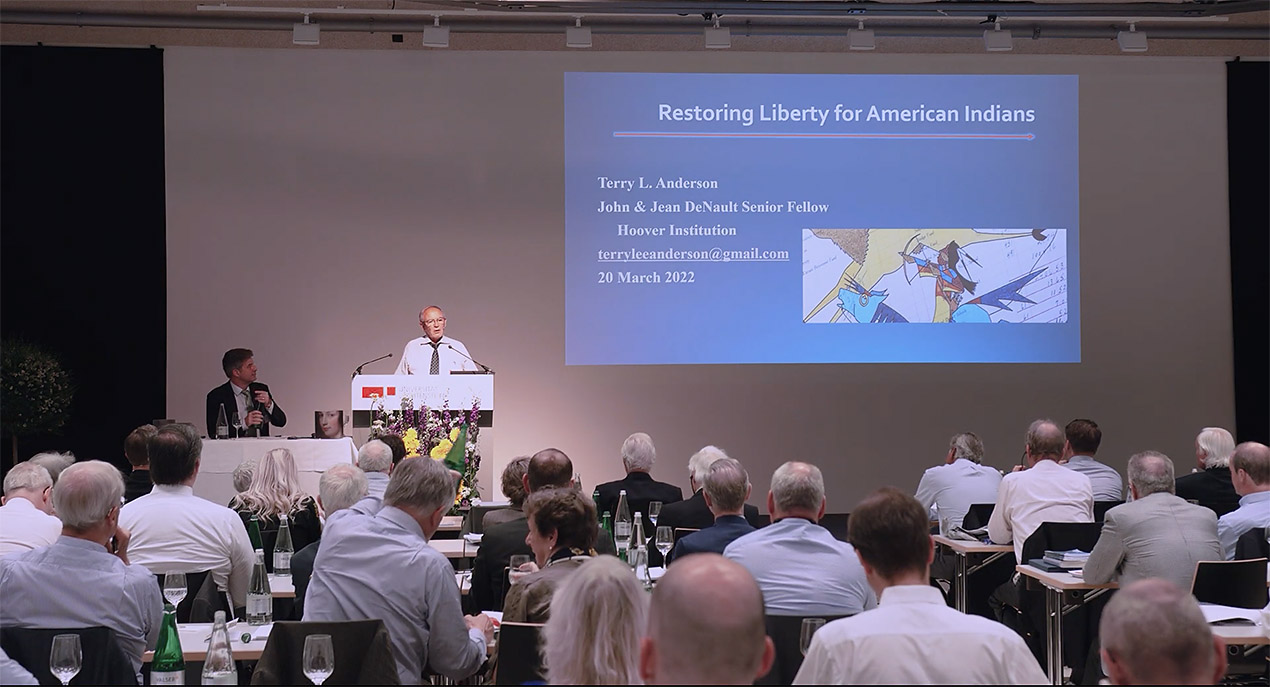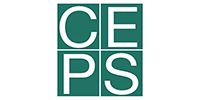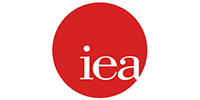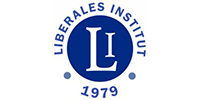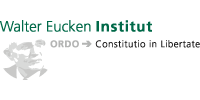How to Avoid a Hyperinflation
On May 28, economist Steve Hanke* of the Johns Hopkins University in Baltimore joined the McAlvany Weekly Commentary. This is the podcast with David McAlvany and Kevin Orrick …

|
“Empirically, the best way to deep six the nonsense of Modern Monetary Theory is just to look at the hyperinflation. They contradict the prescriptive elixir that the modern monetary theorist grasps. They’re telling us, ‘Don’t worry about inflation, it’s never going to happen as long as you’re issuing debt in your own currency. You can control it, and there’s no problem.’ It’s just not true.” – Steve Hanke |
Kevin: There are people who actually are not just practitioners, but they are the key men in certain situations. There is a person that you refer to as the hyperinflation hit man. He has had decades of being called on the spot. He’s almost a super hero kind of a guy – when we’ve got a hyperinflation, what do we do? The guy’s name is Dr. Steve Hanke. You’ve been reading his material and you’ve been talking to him when you were in New York. It’s about time we have him on the program.
David: As recently as May 23rd the Wall Street Journal starts talking about the problems in Turkey. We’ve had 50% inflation per year there. What is the prescription? How do you solve this problem, and how to you do it delicately, geopolitically.
Kevin: Who do you call?
David: From a geopolitical perspective, there are certain things that you can and can’t do, and Steve Hanke gets into the mix in terms of what the possible solutions are. Wall Street Journal editorial, May 23rd, you will see him name and the prescription that he says is necessary at currency board.
What we want to do is look at the disciplines necessary for stable money, and there are points in the historical continuum where money goes crazy – the printing of it, the consequences socially and politically from that. The currency board is one way of bringing back the discipline. Of course, we are in an era that is fiat. We are in an era where all money is free-floating and only has relative values, which means we have basically abandoned disciplines. There are, still, even with that being said, many more disciplines in place with certain currencies than with others.
Kevin: When we look at the definition of hyperinflation in the way Steve Hanke defines it, we have had 58 hyperinflations. He has been called in on a number of them back in the 1990s – Bulgaria, Yugoslavia. He has a lot to say about Zimbabwe and Venezuela. Both of those have been just recently in the last couple of years.
David: I would take the time to look at the CATO working paper, “World Hyperinflations.” Published August 15, 2012, it has been updated. There are a few more data points to include since then. But what you will find in that working paper is a chart which basically shows you all the things that you would want to know – it’s the hyperinflation table Hungary, Zimbabwe, Yugoslavia, Germany, Greece.
And it puts it all in perspective because all of a sudden what we thought was the big deal – Germany 1922-1923, is actually not – nowhere near the worst hyperinflation of our era, and very intriguingly ties in the time required for prices to double to where it is not just a monstrous number that you can’t wrap your mind around in terms of an inflation rate – per month, per year, per day, what have you. But the time required for prices to double – 15 hours, 24 hours, 4 days, 15 days – it’s fascinating to see what the real impact is and to put yourself in the shoes of the person who is experiencing that. Today, it’s the man in Venezuela.
Kevin: And Dr. Hanke has also said there has not been a single hyperinflation when a currency is tied to something stable. I would like to hear, Dave, while you are talking to him, about Modern Monetary Theory, the new way of justifying just printing money out of thin air, and how that might apply to socialism. Look at the French Revolution a couple of hundred years ago. Socialism, the answer, there is a revolution one way or another. You either have a revolution toward liberty or a revolution toward socialism. They are almost always in the same room with a hyperinflation.
David: What sounds out as different in the modern era – 20thcentury, 21stcentury, is that there has been an increased likelihood of hyperinflations, but you are right, there are ideas connected to those countries and the malpractice, if you will, in terms of the handling of the monetary system.
So we begin – Professor Steve Hanke, Professor of Applied Economics at Johns Hopkins University, Senior Fellow at the CATO Institute. Steve, we have been looking forward to this conversation for some time. I met you at the Grants Conference along with Dick Sylla and Russell Napier, and of course Jim Grant and a number of other people. We had some fascinating conversations around the financial markets and some of the key economic variables. We looked at different regions of the world.
You are a Professor of Applied Economics at Johns Hopkins University and a Senior Fellow at the CATO Institute, but what that doesn’t say is what your worldly experience has been. Our conversation today may seem like an adventure travelogue as much as a critical look at the topic of hyperinflation. In my opinion, you have lived an interesting life. Not everybody thinks about inflation. In fact, Keynes said that one in a million understand it, and yet you’re one of the foremost experts on it. I’m curious – what about the topic compels you? Do you have a personal whyin that mix?
Steve: I think any economist is always interested in the two components of nominal GDP growth and one is inflation and the other is real economic growth. You slice and dice nominal GDP and there are just two things in it – inflation and real growth. And people are very interested in that, and in fact, with the original misery index that Art Okun developed for President Johnson you would have a simple gauge to see how things were going in the economy.
The original misery index was that misery was equal to inflation plus unemployment. And unemployment is very connected to the real part of economic growth, so you had inflation and then you had unemployment, which as I say is related to real growth. So it is always part of the picture and people in general, let’s face it, are always interested in the purchasing power of the currency that they happen to be living with.
We live with the dollar, but if you are in some place like Argentina, for example, you pay attention to inflation because you know the purchasing power of the peso is going to be very much affected by the inflation rate. And that inflation rate will be driven by the exchange rate of the peso. The peso gets weak and inflation goes up. That’s the name of the game. And if that happens your purchasing power is reduced. All your plans are related to what is going to be happening with inflation.
David: Well, before we go any further, let’s get your definition, because hyperinflation, depending on how you slice and dice that term, gives you how many instances we have had in history. We tend to think of big bouts of inflation even going back to ancient Greece and Rome, but you have a specific definition which puts us at something like 56 or 58 occurrences in all of time.
Steve: Right. There are now 58 by my count, and I did the world hyperinflation table for the Routledge series. Actually, that is where the world hyperinflation table arose. That table was done for the Routledge Handbook of Major Economic Events in Economic History, which was published in 2013. And then there were 56 that we have documented and since then there have been two more, one in Venezuela and one in Zimbabwe, so there are a total of 58. My definition is that the inflation rate per month must reach 50%. That is kind of the standard convention that economists use.
And since that convention I have added another aspect to it because I can measure these hyperinflations with high-frequency data. I can measure it, actually, every day. So I say 50% per month measured in 30 consecutive days. So for 30 consecutive days if the monthly inflation rate is 50% or more, it qualifies as a hyperinflation for me. So it’s a lot of inflation, and in the press the term is used in kind of a loose way. They’re not very careful. Right now, there is only one hyperinflation in existence and that is in Venezuela where the annual rate of inflation today I just measured as 51,929% per year.
David: Well, we’re doing considerably better since earlier in the year when we were at 165,000% or something like that, so things are getting much better for the Venezuelans.
Steve: Right. It has come down since February. It has come down, but it is still in a big state of hyperinflation.
Steve: And it has lasted for 30 months. It’s not a huge hyperinflation. It only ranks 23rdout of the 58, David, but it has lasted a long time. There have only been four hyperinflations that have lasted longer than Venezuela’s 30 months.
David: I spoke with Peter Bernholtz. Of course he was looking at things with a different definition. He describes 30 in his book, Monetary Regimes and Inflation, and again, the count differs by how you define the term and set the parameters. I’d love for you to comment on this, I found it interesting that those 28 or 29 out of 30 took place in a context devoid of gold backing for the currency. Can you explore that factor from your perspective?
Steve: There has never been a hyperinflation, no matter how you define them, that has existed where you had a commodity-backed currency. The earliest recorded one was in France. It started in May of 1795 and ended in November of 1796, and that was with a fiat currency. They went off gold, so there is nothing really to control a printing press, shall we say. The currency that was being printed wasn’t redeemable into gold or any other commodity. So inflation took off and they had a hyperinflation in France in that period of time.
And all of the other ones were the same story. There has never been anything that the currency of issue is redeemable into by way of a commodity, whether gold or silver. Those are the two big ones. They are all fiat currencies with no connection whatever to any kind of commodity.
That gets into another point, David. That is, what really causes a hyperinflation? Well, the first thing is that you don’t have any redemption. There is nothing to back the currency, and that’s in the picture, but the big thing that is in the picture is the fiscal side of the government, the government spending money and the sources of financing they are spending dry up on them, for one reason or another conventionally. Either the tax base is gone or eroded. This was the fall of Communism. This was a big factor in the 1990s. There was a lot of hyperinflation in the 1990s because as these countries transitioned from communism to some sort of market-oriented economy. They didn’t have tax administration because in the communist regimes they didn’t any kind of taxes at all …
Listen to the Podcast or continue reading ->
How to Avoid a Hyperinflation
*Steve H. Hanke is an American applied economist at the Johns Hopkins University in Baltimore, Maryland. He is also a Senior Fellow and Director of the Troubled Currencies Project at the libertarian Cato Institute in Washington, DC, and Co-Director of the Johns Hopkins Institute for Applied Economics, Global Health, and the Study of Business Enterprise in Baltimore.



